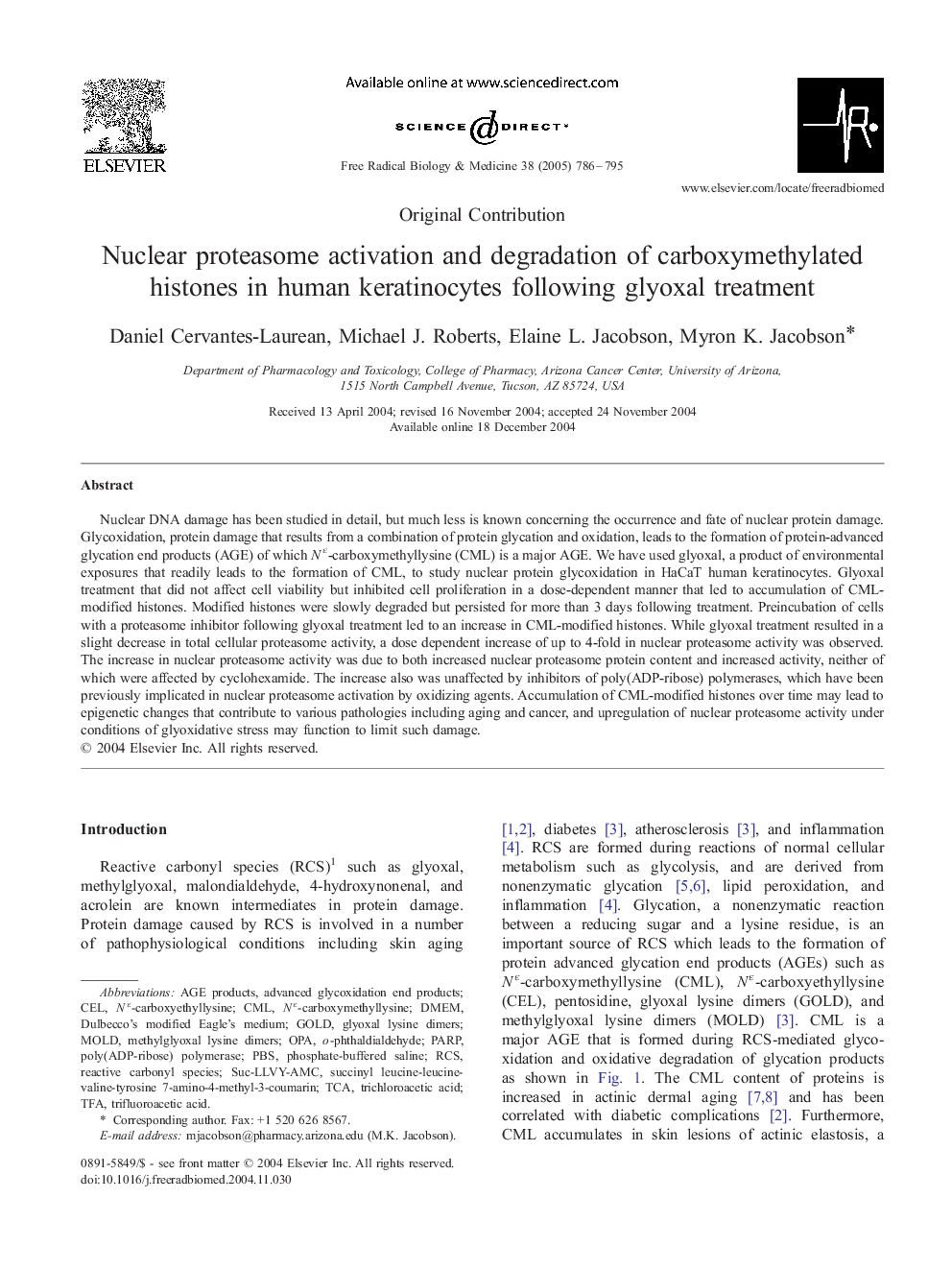| Article ID | Journal | Published Year | Pages | File Type |
|---|---|---|---|---|
| 10738810 | Free Radical Biology and Medicine | 2005 | 10 Pages |
Abstract
Nuclear DNA damage has been studied in detail, but much less is known concerning the occurrence and fate of nuclear protein damage. Glycoxidation, protein damage that results from a combination of protein glycation and oxidation, leads to the formation of protein-advanced glycation end products (AGE) of which NÉ-carboxymethyllysine (CML) is a major AGE. We have used glyoxal, a product of environmental exposures that readily leads to the formation of CML, to study nuclear protein glycoxidation in HaCaT human keratinocytes. Glyoxal treatment that did not affect cell viability but inhibited cell proliferation in a dose-dependent manner that led to accumulation of CML-modified histones. Modified histones were slowly degraded but persisted for more than 3 days following treatment. Preincubation of cells with a proteasome inhibitor following glyoxal treatment led to an increase in CML-modified histones. While glyoxal treatment resulted in a slight decrease in total cellular proteasome activity, a dose dependent increase of up to 4-fold in nuclear proteasome activity was observed. The increase in nuclear proteasome activity was due to both increased nuclear proteasome protein content and increased activity, neither of which were affected by cyclohexamide. The increase also was unaffected by inhibitors of poly(ADP-ribose) polymerases, which have been previously implicated in nuclear proteasome activation by oxidizing agents. Accumulation of CML-modified histones over time may lead to epigenetic changes that contribute to various pathologies including aging and cancer, and upregulation of nuclear proteasome activity under conditions of glyoxidative stress may function to limit such damage.
Keywords
Related Topics
Life Sciences
Biochemistry, Genetics and Molecular Biology
Ageing
Authors
Daniel Cervantes-Laurean, Michael J. Roberts, Elaine L. Jacobson, Myron K. Jacobson,
